Color illusion 14
Since April 14, 2011
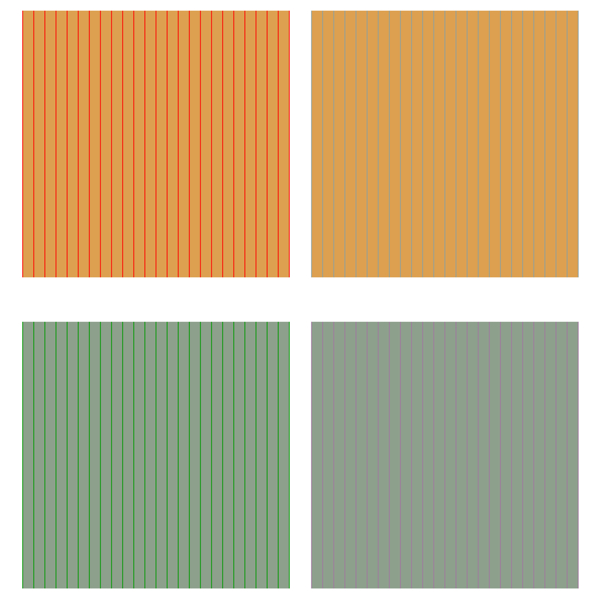
Color assimilation: version 2013
In each row, the colors of squares are the same but the left one appears to be more saturated than the right one because of color assimilation rendered by color gratings of thin lines.
Copyright Akiyoshi Kitaoka 2013 (September 10)

"Kajita's illusory color-based pinciushion grid illusion (Itokawa
line)"
Observers who wear a pair of glasses see illusory red dots above or below white dots and illusory red lines running vertically.
Copyright Akiyoshi Kitaoka 2012 (January 12)

Observers who wear a pair of glasses see illusory red dots at the right or left sides of white dots and illusory red lines running horizontally.
See like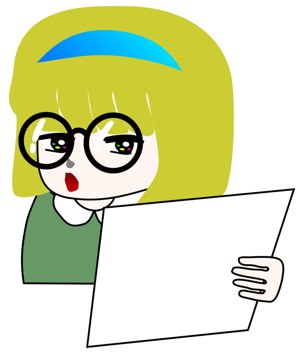 or
or .
.

"Kajita's illusory color-based pinciushion grid illusion 2"
Observers who wear a pair of glasses see illusory cyan dots above or below white dots and illusory cyan lines running vertically.
Copyright Akiyoshi Kitaoka 2012 (January 12)

Observers who wear a pair of glasses see illusory cyandots at the right or left sides of white dots and illusory cyan lines running horizontally.
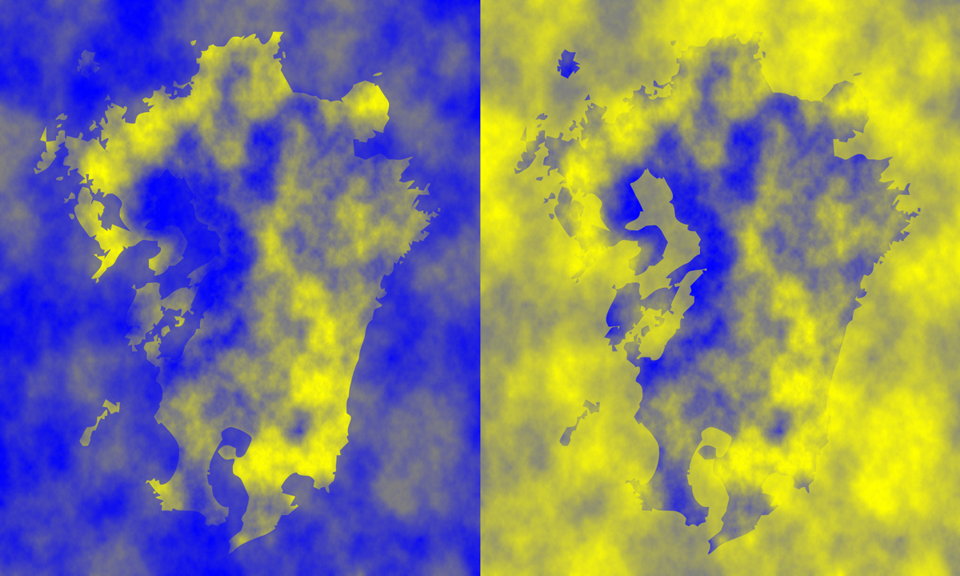
"Kyushu"*
*The thrid largest island of Japan
The left island appears to be yellowish while the right bluish, though they are the same.
Copyright Akiyoshi Kitaoka 2012 (November 23)
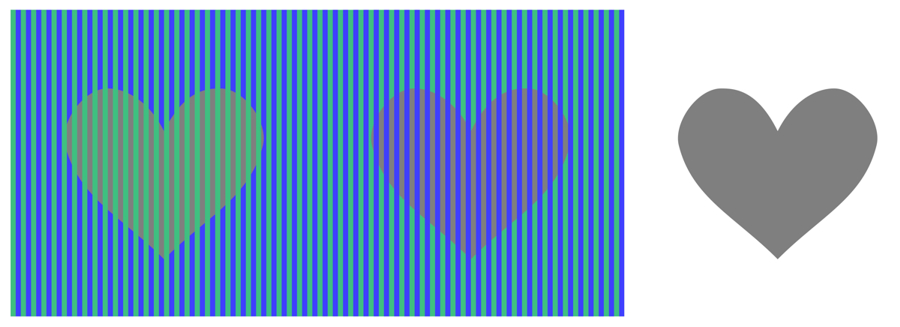
"Orange heart and Pink heart"
The left heart appears to be orange while the middle one appears to be pink. But they are the same gray as the right heart.
Copyright Akiyoshi Kitaoka 2012 (August 20)
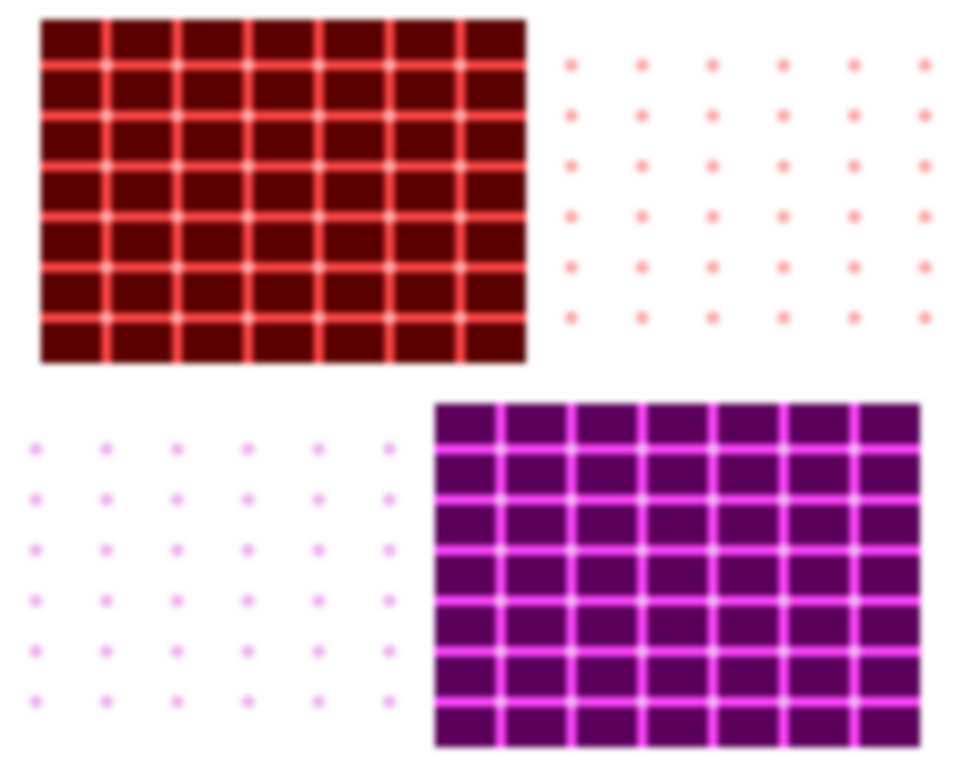
"Kajita's Bergen grid illusion"
The upper-left image consists of red parts, but the light-red dots appear to be tinted bluish or to scintillate so. The real color of them is shown at the right side. The lower-right image consists of magenta (red-purple) parts, but the light-magenta dots appear to be tinted bluish or to scintillate so. The real color of them is shown at the left side.
Copyright Akiyoshi Kitaoka 2011 (December 1)
Kajita
sensei's page
(in Japanese)
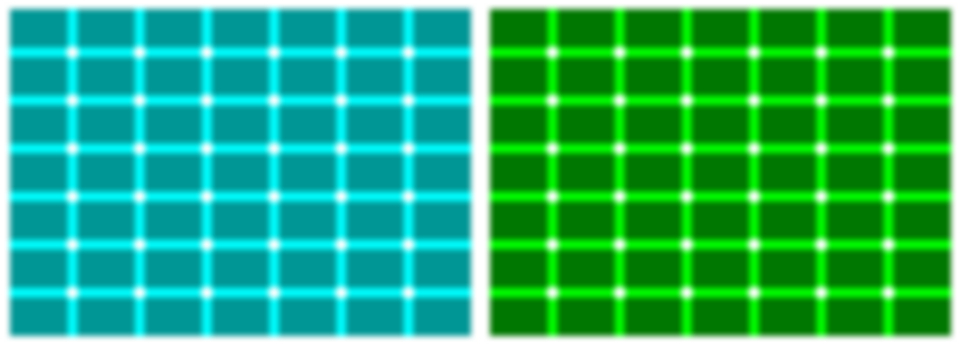
"Kajita's Bergen grid illusion"
All white dots appear to be tinted reddish or to scintillate so.
Copyright Akiyoshi Kitaoka 2011 (December 1)
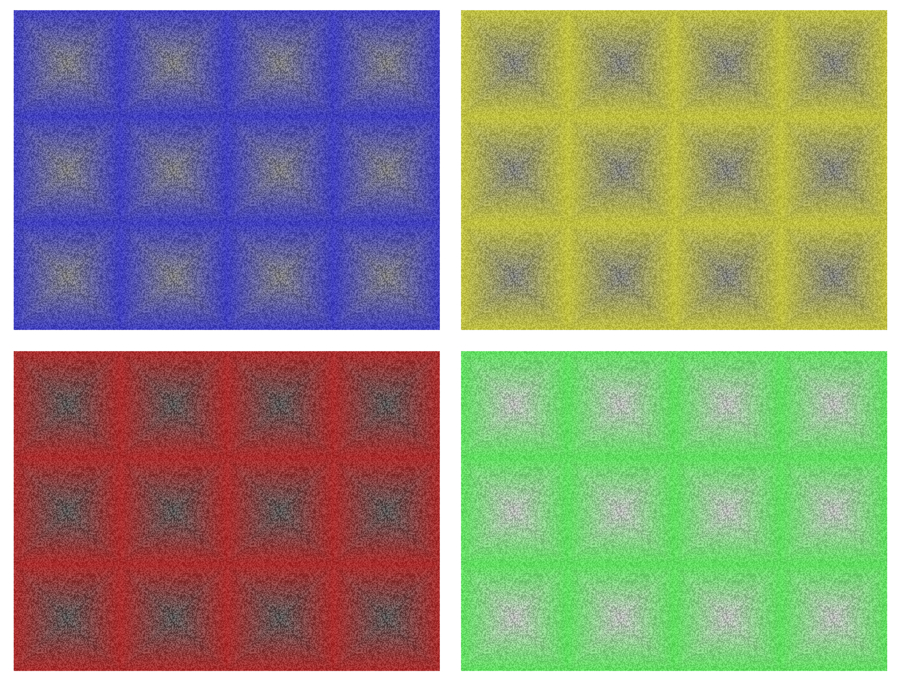
"Illusory color crosses"
There appear to be illusory yellow, blue, cyan or magenta crosses (chromatic Vasarely illusion).
Copyright Akiyoshi Kitaoka 2011 (November 21)
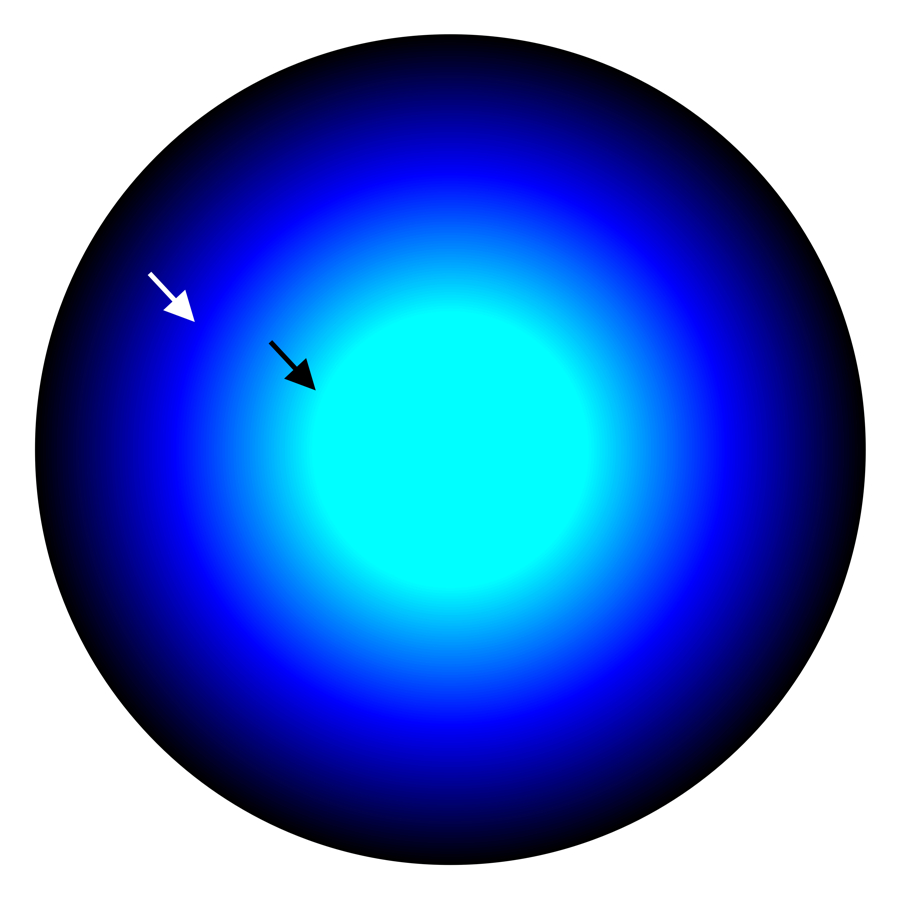
"Captured sun 2"
There appear to be an illusory blue or light-blue rings (chromatic Mach bands).
Copyright Akiyoshi Kitaoka 2011 (November 6)
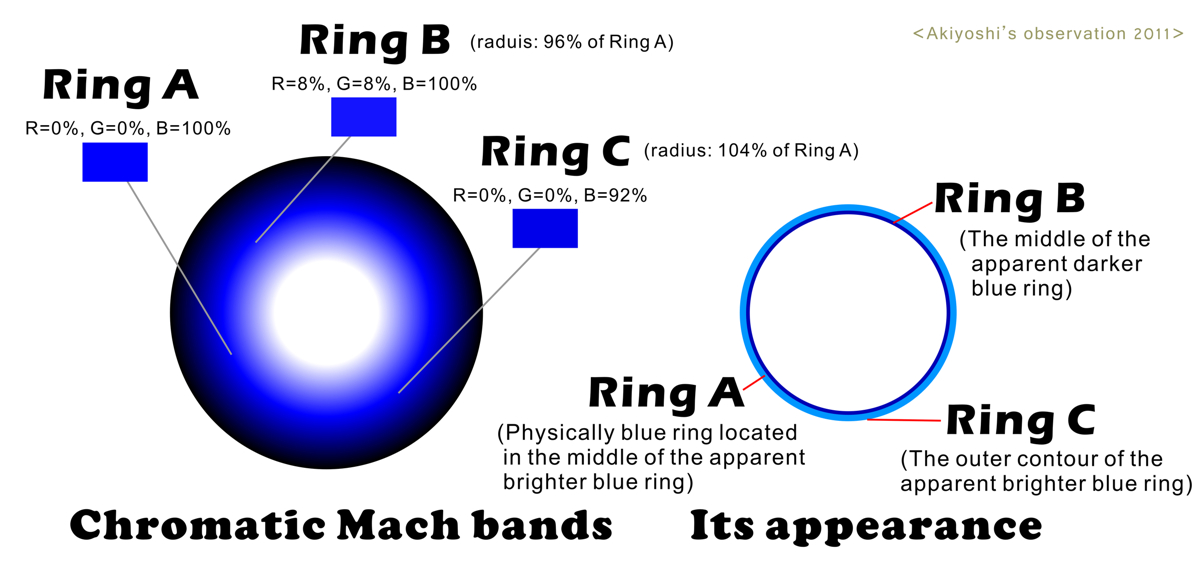
"Two bands in the chromatic Mach band illusion"
There appear to be bighter or darker blue rings of the chromatic Mach bands (around Ring A or around Ring B). This disk physically consists of the outer ring of black-to-blue gradation, the inner ring of blue-to-white gradation, and the central white disk.
Copyright Akiyoshi Kitaoka 2011 (November 7)
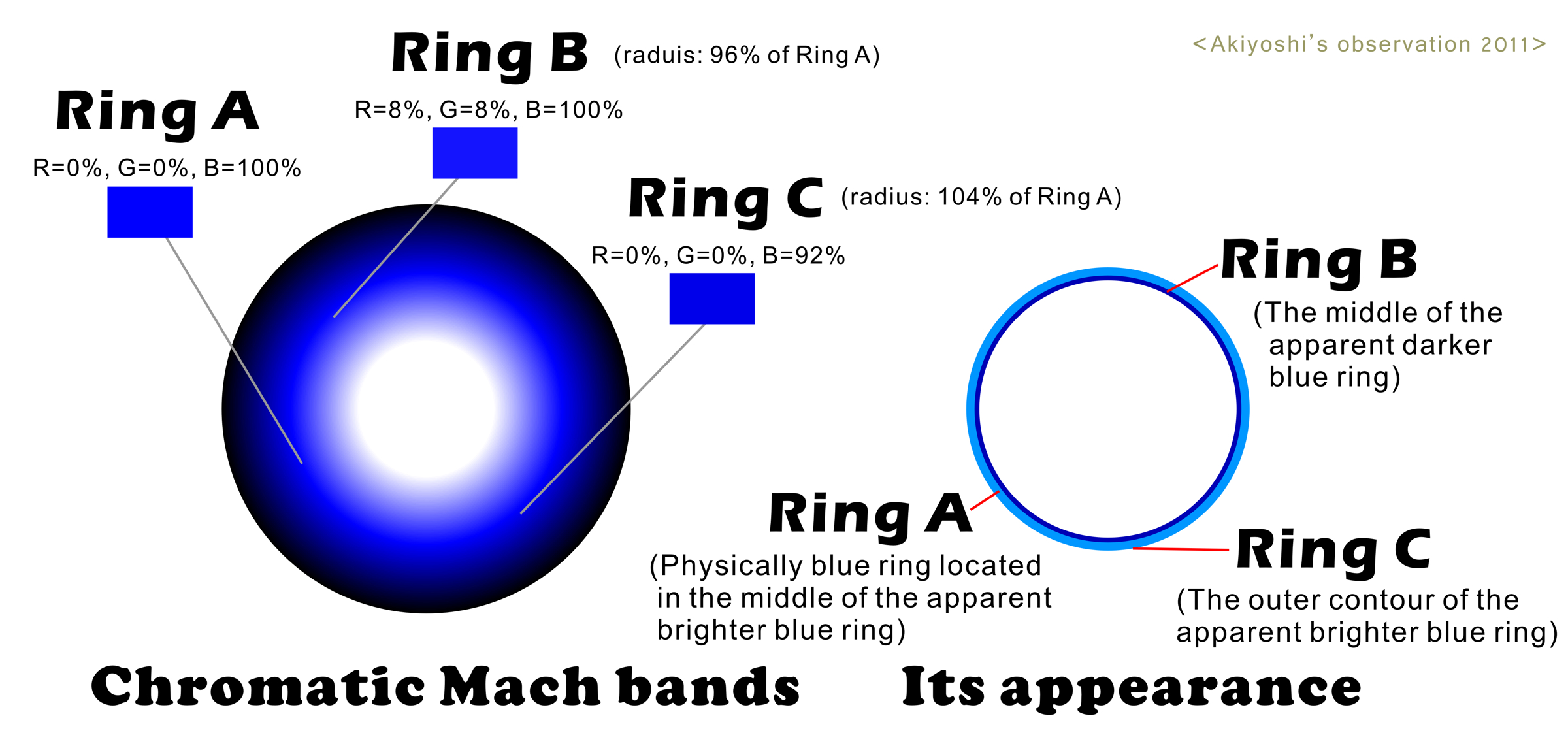
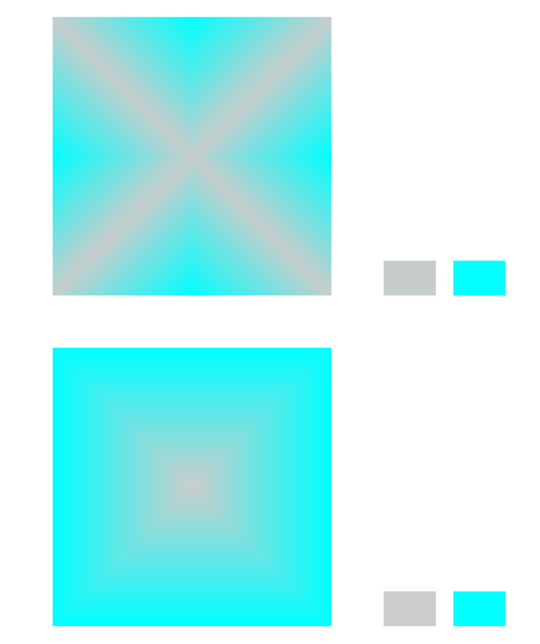
"Chromatic Mach bands and chromatic Vasarely illusion using color-contrast-induced
illusory color"
Slightly reddish diagonals are observed for both squares, though the color is actually the gray shown in the right. The upper square shows chromatic Mach bands while the lower one displays the chromatic Vasarely illusion. In addition, in the upper square, a Vasarely illusion with cyan color is faintly observed forming a shape of +.
Copyright Akiyoshi Kitaoka 2011 (November 5)
The reversal of the upper image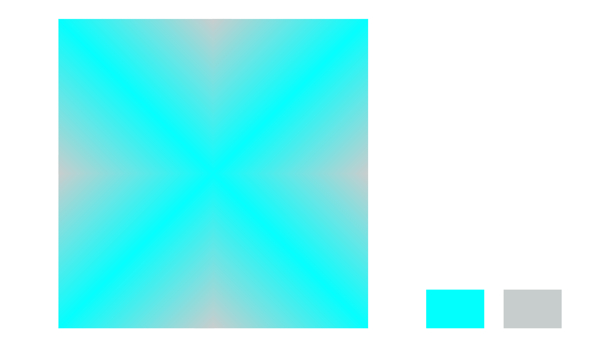
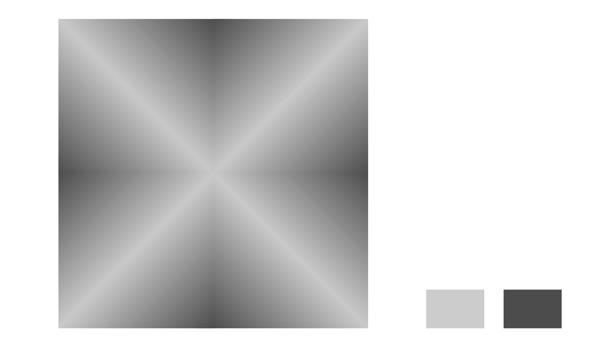 A gray-scale version, including bright Mach bands (x shape) and dark Vasarely
illusion (+ shape)
A gray-scale version, including bright Mach bands (x shape) and dark Vasarely
illusion (+ shape)
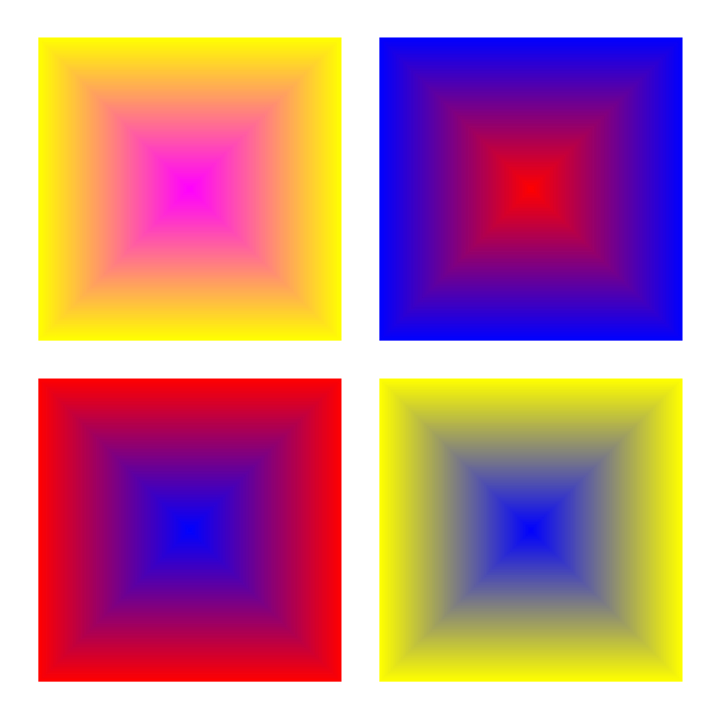
"Chromatic Vasarely illusion and expansion/contraction"
There appear to be chromatic diagonals in each square. The upper-left and lower-right squares appear to contract, while the rest appear to expand.
Copyright Akiyoshi Kitaoka 2011 (November 5)
References for the Vasarely illusion
Jameson and Hurvich (1975, Leonardo, 8, 125-131, p.129)
Martinez-Conde S and Macknik SL (2001). Society for Neuroscience 31st Annual Meeting, San Diego, CA.
Troncoso, XG, Macknik SL, Martinez-Conde S (2005). Novel visual illusions related to Vasarely’s ‘nested squares’ show that corner salience varies with corner angle. Perception 34: 409-420.

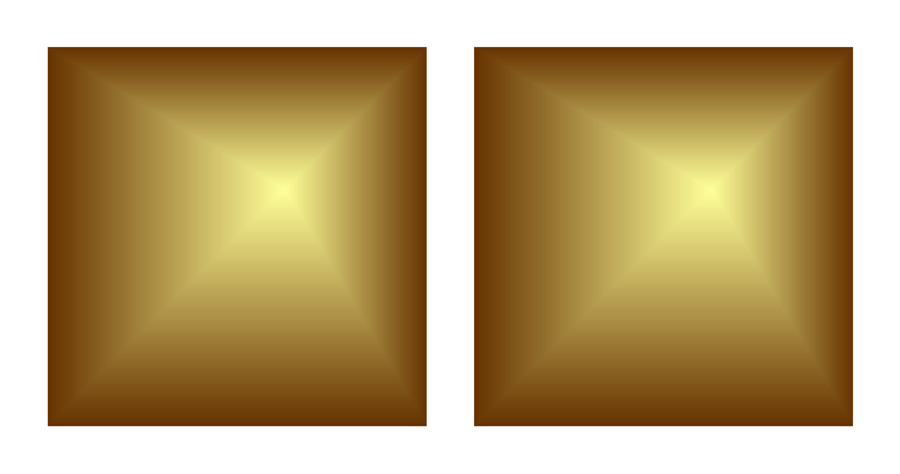
"Pyramids and tunnels 2"
There appear illusory chromatic lines (Vasarely illusion). Moreover, the two image is identical, in which either pyramid or tunnel is visible. When pyramids are seen, the top appear to point for us and the axes appear to converge. On the other hand, when tunnels are visible, they appear to head for bright exits and the axes appear to diverge.
Copyright Akiyoshi Kitaoka 2011 (November 6)
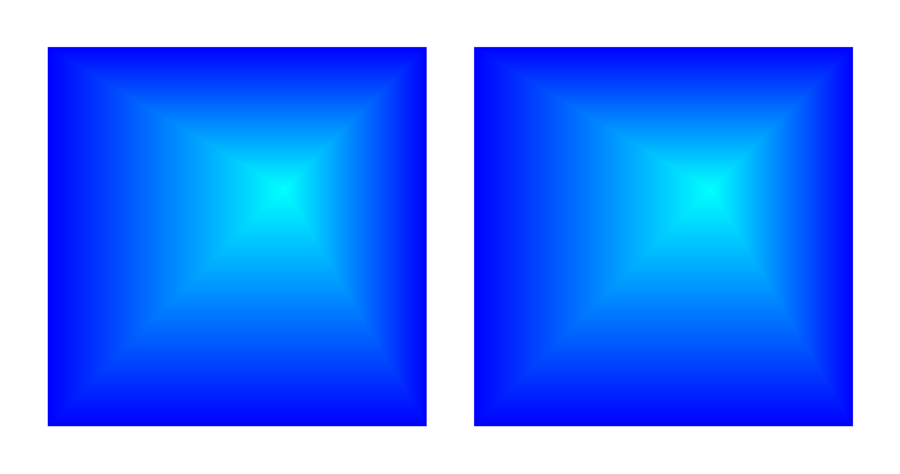
"Pyramids and tunnels 3"
There appear illusory chromatic lines (Vasarely illusion). Moreover, the two image is identical, in which either pyramid or tunnel is visible. When pyramids are seen, the top appear to point for us and the axes appear to converge. On the other hand, when tunnels are visible, they appear to head for bright exits and the axes appear to diverge.
Copyright Akiyoshi Kitaoka 2011 (November 6)
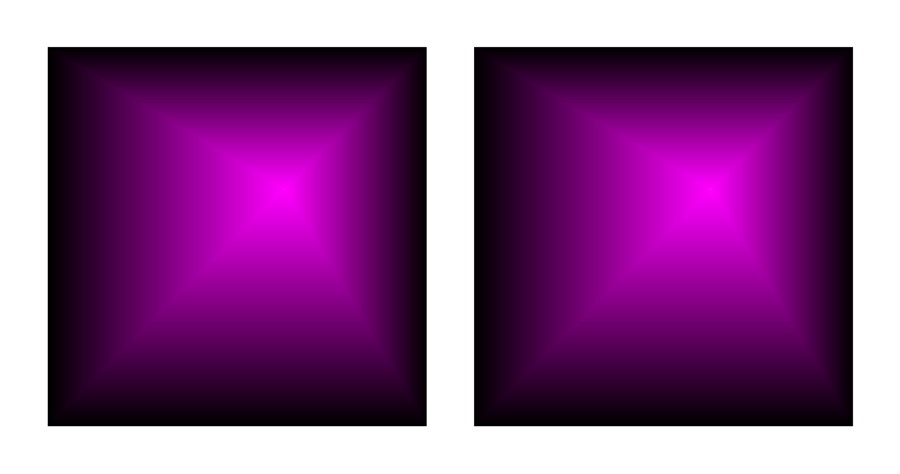
"Pyramids and tunnels 4"
There appear illusory chromatic lines (Vasarely illusion). Moreover, the two image is identical, in which either pyramid or tunnel is visible. When pyramids are seen, the top appear to point for us and the axes appear to converge. On the other hand, when tunnels are visible, they appear to head for bright exits and the axes appear to diverge.
Copyright Akiyoshi Kitaoka 2011 (November 6)
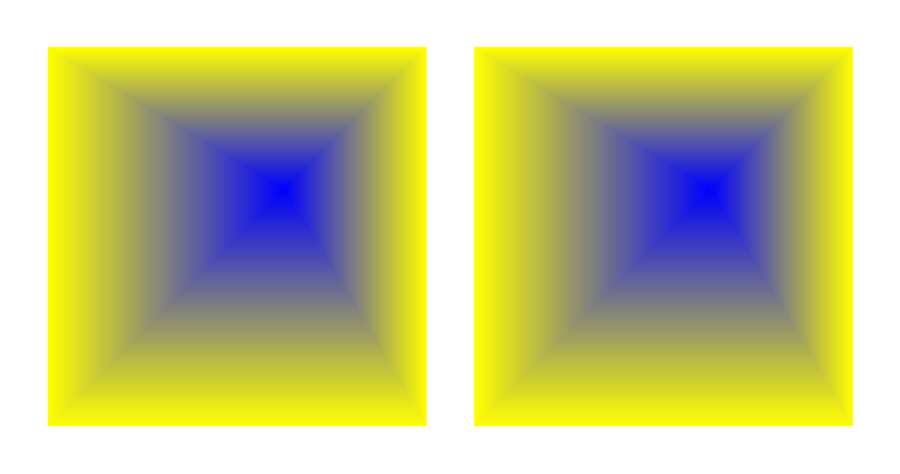
"Contracting tunnels"
There appear illusory bluish lines (Vasarely illusion). Moreover, the two image is identical but they appear to diverge. In addition, the entrances appear to contract.
Copyright Akiyoshi Kitaoka 2011 (November 6)
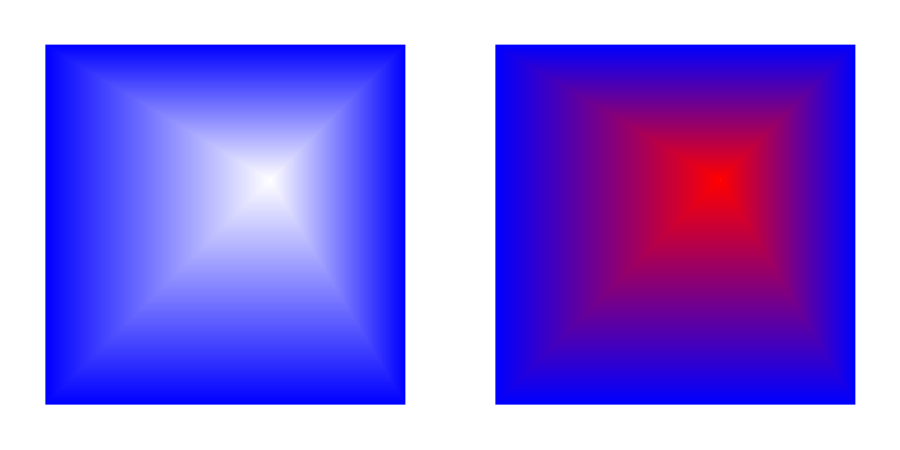
"Mt. Fuji"
There appear illusory white lines or red lines (Vasarely illusion).
Copyright Akiyoshi Kitaoka 2011 (November 6)
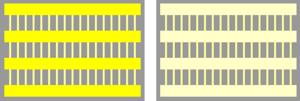
"Matsuda's saturation assimilation"
The left vertical gratings appear to be more vivid than the right ones, though they are the same color. This effect was proposed by Hiroko Matsuda.
Copyright Akiyoshi Kitaoka 2011 (May 2)
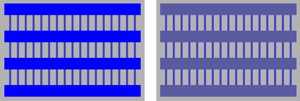
Copyright Akiyoshi Kitaoka 2011 (May 9)
For this effect, attachment to the inducing area should be important. <July
10, 2011>
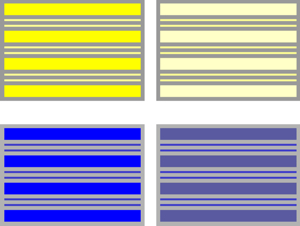 versus
versus 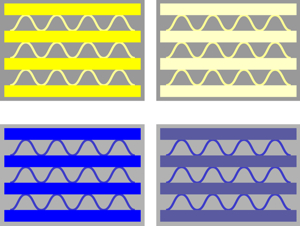
Copyright Akiyoshi Kitaoka 2011 (July 10)
Complete attachment produces saturation contrast.
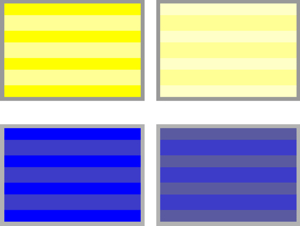
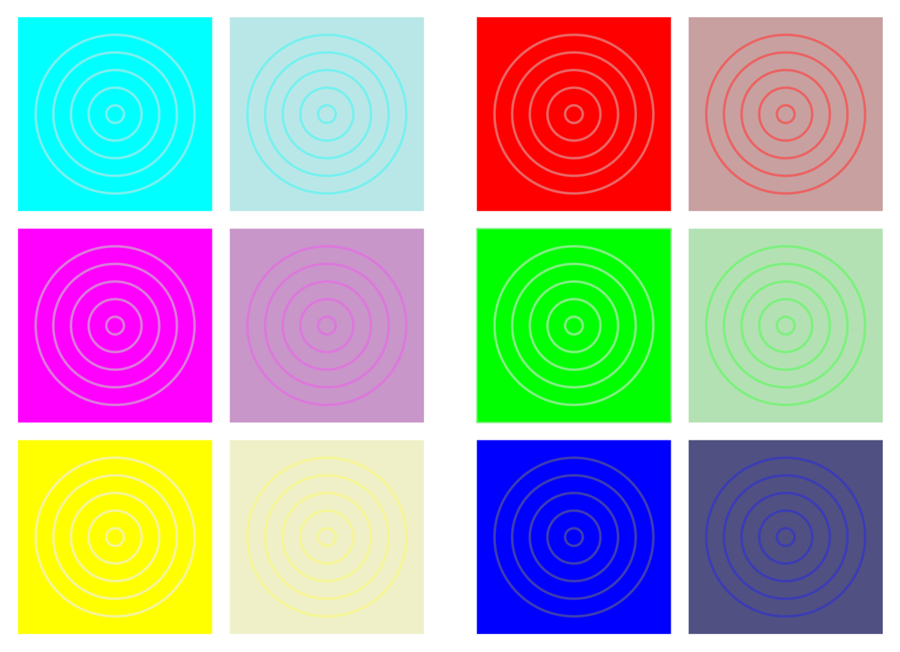
"Saturation contrast or hue contrast?"
In each color (CMYRGB), the left rings appear to be less saturated and the right ones appear to be more vivid, though they are the sane color.
Copyright Akiyoshi Kitaoka 2011 (May 5)
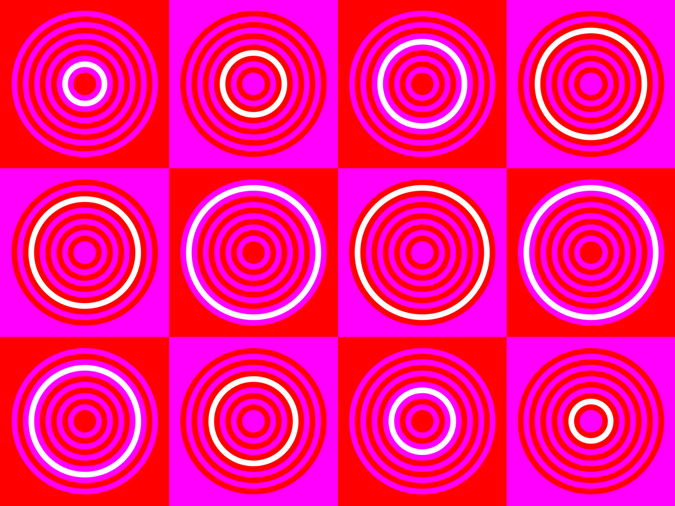
"Yellow development"
It appears as if there were yellowish and white rings, though they are the same color.
Copyright Akiyoshi Kitaoka 2011 (April 14)